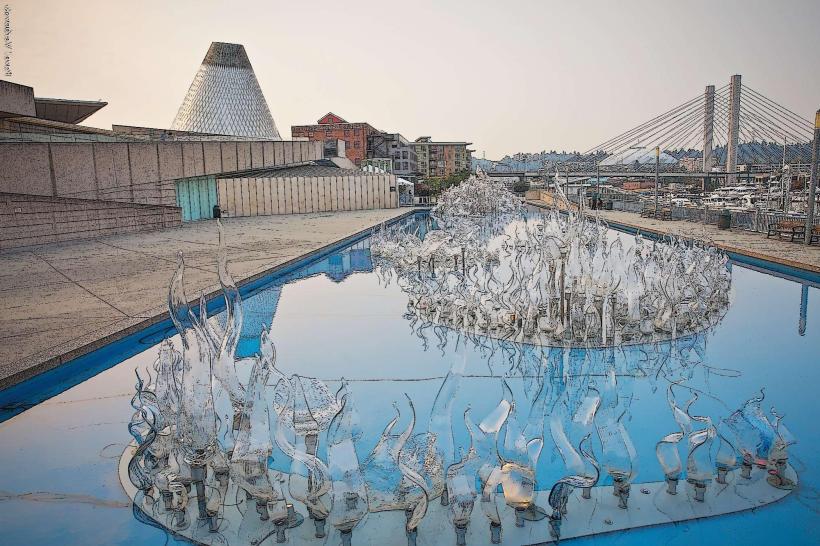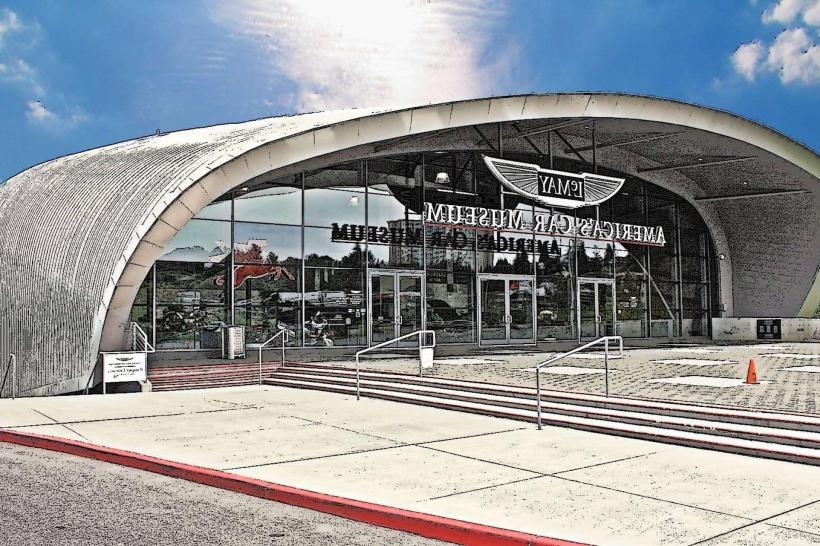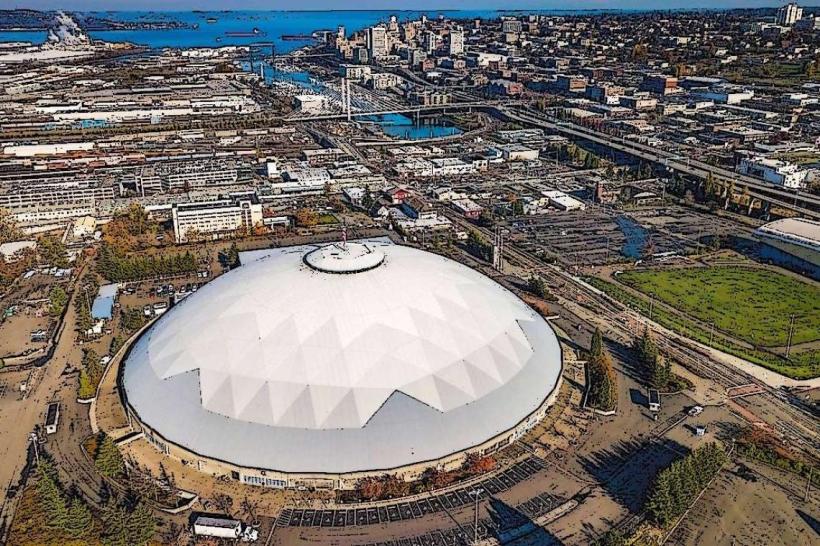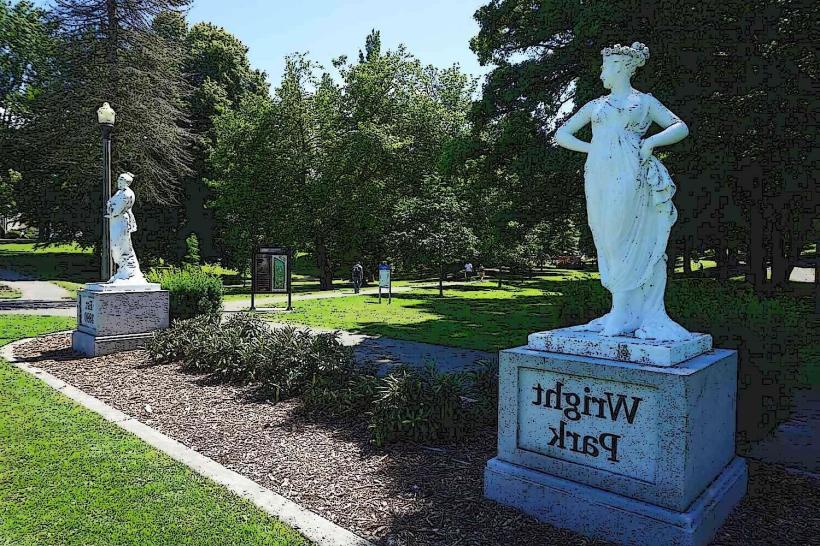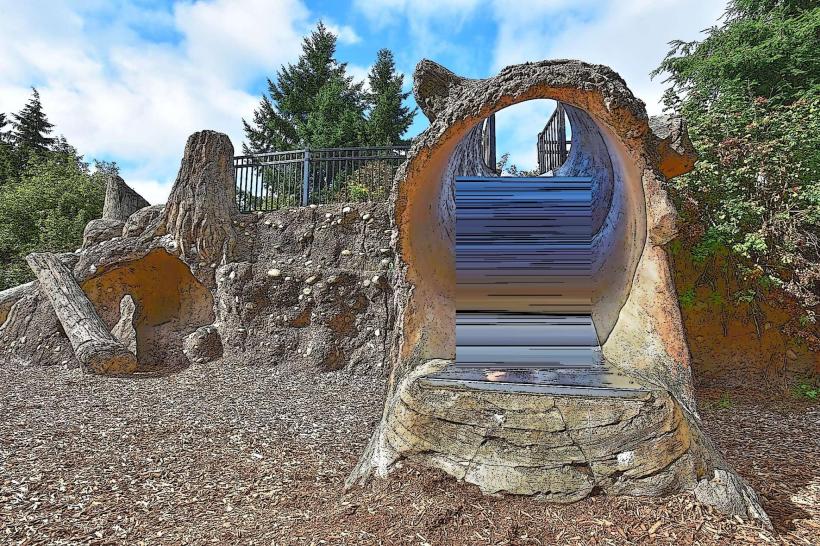Information
Landmark: Washington State History MuseumCity: Tacoma
Country: USA Washington
Continent: North America
Washington State History Museum, Tacoma, USA Washington, North America
Overview
It seems, In downtown Tacoma, the Washington State History Museum stands as a lively hub for preserving, interpreting, and sharing the state’s rich past-its galleries echo with stories from coastal fishing villages to bustling city streets, also run by the Washington State Historical Society, the museum pulls you into Washington’s story with vivid exhibits, hands-on displays, and programs where kids might sketch a pioneer cabin while adults explore centuries of history.The museum, opened in 1996, was the work of renowned architect Charles Moore, its glass façade catching the morning light, also the building’s design draws from Washington State’s rugged mountains and rich cultural heritage, somewhat Sweeping curves and round motifs mirror the rugged lines of the Cascades, while the tiered, amphitheater seating follows the gentle rise and fall of Puget Sound’s shoreline, while right next to Tacoma’s historic Union Station, the museum mixes sleek modern lines with echoes of the past, helping breathe innovative life into the city’s downtown cultural district, for the most part The museum sits on Pacific Avenue, just steps from the Museum of Glass, LeMay – America’s Car Museum, and the shimmering Thea Foss Waterway, placing it at the heart of Tacoma’s lively Museum District, in turn the Washington State History Museum holds thousands of artifacts, faded photographs, handwritten documents, and vivid multimedia displays, all weaving together the layered story of Washington-from its prehistoric roots to the bustle of today.The museum’s permanent exhibits dive into themes like Indigenous cultures and early inhabitants, featuring Washington’s Native American heritage with vivid displays-including a reconstructed Southern Coast Salish plank house, its cedar planks smelling faintly of salt and smoke, equally important the exhibits showcase the region’s indigenous traditions, art, and ways of life, from intricate beadwork to ancient songs, underscoring how vibrant and crucial their culture remains today.The Exploration and Settlement exhibits bring to life the age of European discovery, from Captain George Vancouver’s voyages to the bustling fur trade, and on to the rough-hewn settlements that paved the way for Washington’s statehood, therefore industrial and Economic Development: Visitors can explore how Washington grew, from the roar of sawmills in logging towns to bustling fishing docks and the rise of its aerospace industry.One highlight is the Boeing exhibit, where you can trace the state’s pivotal role in aviation-from the roar of early propellers to sleek modern jets, then the museum’s transportation exhibit boasts a sprawling 1,700‑square‑foot model train layout-the largest in the state-where tiny engines wind through hills and towns to show how railroads drove Washington’s economic growth.The model brings to life notable local landmarks, like Tacoma’s Union Station with its gleaming dome, and stands as both a teaching tool and a touchstone for fond memories, as a result military and wartime history comes alive in exhibits that showcase Washington’s role in conflicts from World War I to World War II, along with the influence of its bustling bases and shipyards.Social and Cultural Life: The museum delves into Washington’s social fabric, weaving together tales of immigrants, labor struggles, shifting traditions, and the rhythms of daily life-from bustling markets to quiet kitchen tables-across different eras, moreover the museum keeps its lineup fresh with rotating temporary exhibitions, each one adding recent layers to the permanent collection-like a vivid painting that draws the eye the moment you meander in.These rotating exhibitions dive into niche subjects, tackle current issues, or mark the anniversaries of pivotal moments-like the centennial of a landmark treaty, along with in recent years, the museum welcomed exhibits marking the 150th anniversary of the Northern Pacific Railroad’s first stop in Tacoma, along with displays of Kenneth D.’s delicate, ash-glazed ceramics.Stevens glanced up, the faint scratch of his pen still hanging in the air, after that temporary exhibits offer fresh angles and keep people coming back-locals and visitors alike, drawn by something recent, like a splash of bold color on a gallery wall.At the Washington State History Museum, visitors find programs that spark curiosity and invite them to join in-whether it’s a hands-on history workshop or a lively neighborhood event, then it offers educational programs designed for students, families, and adults, from hands-on science projects to lively evening talks, slightly Curriculum-based tours and hands-on workshops bring Washington’s history to life for school field trips, letting students handle artifacts and observe the past up close, furthermore public programs range from lively lectures and guided tours to hands-on family days and colorful cultural celebrations, all drawing visitors into the rich tapestry of Washington’s heritage.The museum runs outreach programs and works closely with tribal communities, making sure Native American histories and perspectives are shown with genuine care-like displaying beadwork crafted by local artisans, in addition at the museum, visitors can soak in a rich mix of art, history, and stories, then pause for a cup of coffee in the sunny courtyard.Inside the facility, you’ll find a museum store packed with books, artwork, handmade crafts, and souvenirs celebrating Washington’s history and culture, many of them created by local artisans, besides at the museum café, guests can sip a sweltering cup of coffee or nibble on a pastry while they unwind and think back on what they’ve seen.The museum welcomes visitors Tuesday to Sunday, and on the third Thursday each month it stays open late, offering free admission from the warm glow of mid-afternoon until night settles in, therefore tickets are priced to stay budget-friendly, with breaks for seniors, students, and military members, and free entry for little kids and anyone in the Washington State Historical Society, slightly often You can park right next to the museum, and buses and trains stop just a short meander away, so it’s an easy trip for locals and visitors alike, also as Tacoma’s main historical museum and one of Washington’s cultural cornerstones, the Washington State History Museum preserves the region’s heritage, sparks curiosity about its past, and helps visitors grasp how the state has grown-right down to the scent of timeworn timber in its exhibits.With carefully chosen exhibits, lively school programs, and strong ties to local groups, the museum protects Washington’s past while sparking fresh conversations about the changing stories that shape it-like the scent of ancient cedar in a pioneer cabin or the buzz of a crowded lecture hall, besides its presence has deepened Tacoma’s identity as a cultural hub, drawing history buffs, families, teachers, and travelers eager for an experience steeped in the Pacific Northwest’s distinctive past-like the scent of cedar lingering in an aged waterfront museum.
Author: Tourist Landmarks
Date: 2025-10-05



